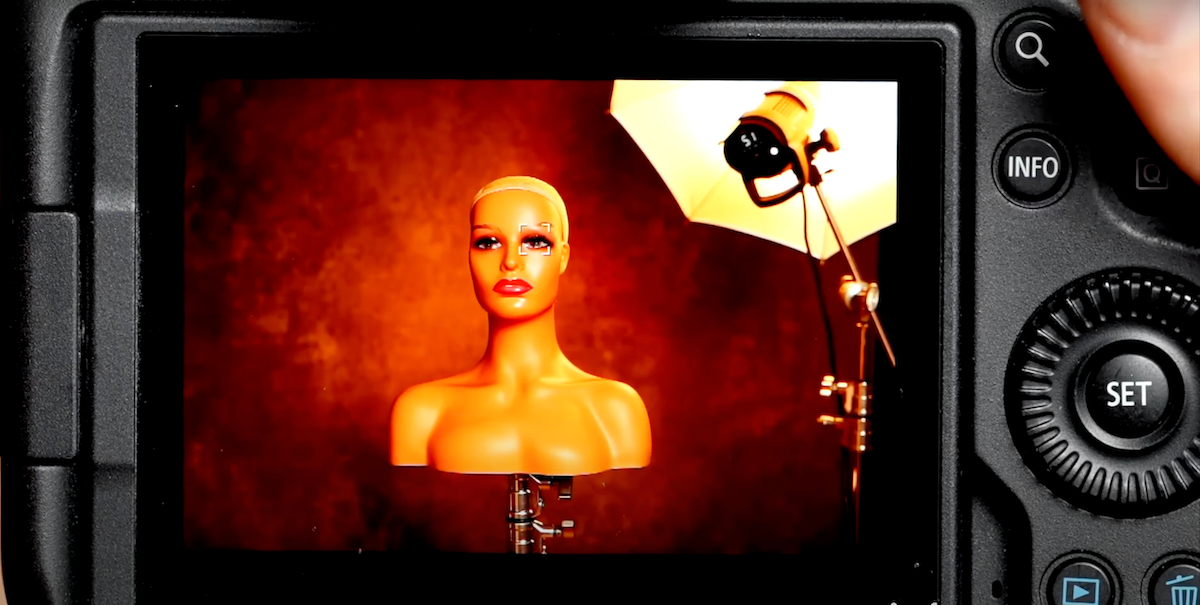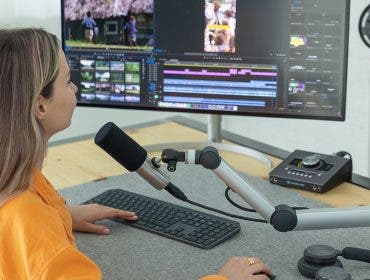Perhaps you are looking for your next camera and you’ve begun perusing today’s newest tech and options. There are a lot of great choices but you want to make sure you select the best choice for your needs as a photographer and your current budget. Picking out the right camera for you can be stressful. It’s a big financial investment and, if you do this for a living, it can be an essential decision for your livelihood. There are so many different considerations that range from budget to size to features. So, which Canon mirrorless camera is right for you?
If you are already in the Canon family, remember that the new mirrorless cameras can work perfectly with your current EF lenses using a (relatively) inexpensive adapter. As you make your upgrade, keeping with Canon may make the most sense. Plus, Canon’s mirrorless cameras have some truly fantastic options for professionals.
Today, we’ll take a look at five Canon mirrorless cameras:
- Canon EOS R7 Mirrorless Digital Camera
- Canon EOS R Mirrorless Digital Camera
- Canon EOS R6 Mark II Mirrorless Digital Camera
- Canon EOS R5 Mirrorless Digital Camera
- Canon EOS R3 Mirrorless Camera
- Canon EOS R8 Mirrorless Digital Camera
Why Mirrorless?
If you are already a Canon shooter and you haven’t switched over to mirrorless, why now? I have quite a few reasons why but — as a portrait photographer — there are three main benefits.

Wireless Functionality
The wireless functionality of mirrorless cameras is something special. It enables any user with a convenience that DSLR cameras just can’t match. With mirrorless cameras, you get wireless image transfer and remote shooting. Without mirrors in the camera, photographers can easily take rapid shots, too.
Electronic Viewfinder
The electronic viewfinder allows you to preview the exposure in real time through your camera. No need to check the shot after or “chimp” to see if you got it right. It makes shooting faster and more accurate. Plus, if I want to shoot with a particular shooting style — like monochromatic — I can preview the image in black and white right in my camera.

Superior Focus
The focus capabilities are vastly superior to most DSLRs. In fact, features like face and eye tracking are a life-saver. The camera finds the eye closest to the camera and keeps it in focus. This allows me to hit focus more accurately. I can go into auto-pilot when it comes to focus and instead pay more attention to things like pose, composition, and expression. Furthermore, I can shoot super wide apertures without fear of a high number of misses. For example, I now feel confident to shoot my Canon RF 85mm f/1.2 L USM Lens wide open at F1.2. This is something I would have shied away from in the past.
Certainly there are other benefits. The new RF Canon mirrorless lens designs often allow the lenses to weigh less, or to be sharper. The cameras are great in low-light focusing, which is important if you shoot events or weddings.
What Type of Photographer Are You?
When deciding on the right Canon mirrorless camera for you, it’s important to consider what type of photographer you are. Cameras are often designed with three kinds of users in mind: consumers, prosumers, and professionals.
Here’s a breakdown of what each type means and what you might look for in a camera:
| Photographer Type | Description | Camera Features to Look For |
| Consumer | These are casual photographers, often new to photography. Most are looking for easy-to-use cameras to learn photography basics. | – Affordable – Automatic settings – Lightweight – User-friendly interface – Basic features |
| Prosumer | These are camera customers with more experience. They are mostly looking for advanced features and better performance. | – Higher resolution – Better focus systems – More manual controls – Improved build quality – Versatile lenses |
| Professional | These are the more experienced photographers, often working in photography full-time. They need cameras with top-tier performance. | – Highest resolution – Fastest focus – Rugged build – Extensive manual controls – Professional-grade lenses |
Selection Criteria for Canon Mirrorless Cameras
Now that you are ready to get a mirrorless camera and have decided to go with Canon, which one should you buy? What criteria should you be looking out for?
Let’s concentrate on the most important elements:
- Budget
- Megapixels
- Focus
- Frame rate
- Other
Budget
Do you need the best features available or simply the best for your money? Take a serious look at your budget, profit, and needs for the way you shoot. The “best” is not always necessary to do a fantastic job for you.
Megapixels
All of these cameras have sufficient megapixels for most portrait photography, with all of them having 24 megapixels or more. If, however, you need to be able to blow up prints very large, then you may want to consider the Canon R5 with 45 megapixels. Perhaps you tend to shoot a bit wider and then need to crop in, then higher megapixels would be a good choice. Content creators that must take single images utilize this for square, horizontal, and vertical formats all in one.
Focus
All of the Canon mirrorless cameras have face and eye tracking with great focus options. Although, some are better than others. The Canon R3, for example, has the fastest tracking features for sports and actions — though this is not typically relevant for portrait photographers.
The Canon EOS R is the first general Canon mirrorless camera and, while still a strong camera, it definitely has first-generation focusing abilities. Therefore, I’d suggest going with one of the other choices on this list unless you can get a great deal on a used one.
Frame Rate
Do you shoot action? Perhaps you shoot dance or an athlete in motion? Or maybe you want to add high school sports games to your high school senior photography business? If so, then a high frame rate will matter. Maybe you want this capability for shooting weddings to get the bouquet toss or some other action-oriented moment. For most other portraiture (even if your subjects are in motion), all of these Canon mirrorless cameras will have a high enough frame rate to capture your needs. The R3 and R6 Mark II both beat out the other cameras when it comes to motion — if this is an important element of how you shoot.
Other
There are other features that you may need based upon the way you shoot. For example, you may consider battery life, focus bracketing features, or other specialty needs.
For example, how important is weight to you? Do you have physical limitations like a bad back or carpal tunnel? Or do you just need the lightest weight option to reduce exhaustion on long days?
What about video features? If you are also getting into video, you will want to look more at the video specs including the ability to shoot 4k or 8k.

The Best Canon Mirrorless Cameras
There are some great gear comparison videos and sites out there, but I want to cut to the chase….
To put this simply, any of these cameras will do a decent job and help you create great portraits. Although, some will have features or capabilities that may better suit how you shoot.
Canon EOS R7 Mirrorless Digital Camera
If budget is your biggest consideration, the R7 is a great for megapixels and frame rate. It’s also the lightest body at the lowest price point. Be aware, however, that the R7 is a crop sensor. This has a few implications. For example, you won’t have as much dynamic range, meaning less room to process files or correct exposure. If you specialize in portrait photography, these two features may not be essential and the significant cost savings may be more important.
Canon EOS R6 Mark II Mirrorless Digital Camera
If you are on a budget, the Canon R6 Mark II still provides a lot of those great features, but with more than a $1,000 of savings. You’ll just be sacrificing some megapixels and 8k video. If these two things don’t matter to you, you will be thrilled with this camera. The R6 Mark II also has the highest electronic FPS rate on this list — making it great for action photography.
Canon EOS R5 Mirrorless Digital Camera
I’d say, as general best quality and features for a portrait photographer, I’d recommend the Canon R5. It has the most megapixels, which is great for large prints. It also has 4k and 8k video if you are dabbling with the world of capturing motion. Plus, it has a ton of focus points to make it lighting fast for eye tracking.
Canon EOS R3 Mirrorless Camera
Lastly, for portrait photographers who need to capture motion, the R3 is great if you have no financial sensitivities. With it, you’ll receive vehicle tracking autofocus, and a second set of buttons/dials in portrait orientation.
Canon EOS R8 Mirrorless Camera
This is the newest and lightest option within the Canon mirrorless lineup. At just $1,500, this is a great option for hobbyists and beginners. It can capture super high FPS for electronic shutter (40fps) and comes with vehicle tracking autofocus as well. But be aware that this model does not have a top LCD screen, no second SD slot, and a slightly shorter battery life.
For a side-by-side comparison, you can refer to the chart below:
|
|
R7 |
R |
R6 Mark II |
R5 |
R3 |
R8 |
| Price | $1,500 | $1,800 | $2,500 | $3,700 | $6,000 | $1,500 |
| Megapixels | 33 | 30 | 24 | 45 | 24 | 24 |
| Focus Point | 651 | 5655 | 4897 | 5940 | 1053 | 2360 |
| Focus Bracketing | yes | yes | no | yes | yes | no |
| Face/Eye Tracking | yes | yes | yes | yes | yes | yes |
| Touchscreen | yes | yes | yes | yes | yes | yes |
| Continuous Shooting | 15m, 30e | 8m | 12m, 40e | 12m, 20e | 12m, 30e | 6m, 40e |
| Battery Life | 660 shots | 370 shots | 580 shots | 320 shots | 760 shots | 290 shots |
| Weight | 612g | 660g | 680g | 738g | 1015g | 461g |
I hope this helps you to navigate the current Canon mirrorless options on the market. Mirrorless will make your life so much easier. You can concentrate less on the tech and more on the art and connection with your subjects.
FAQs
Is mirrorless better than DSLR?
It depends on your preference. With a mirrorless camera, you see a preview of the shot in the electronic viewfinder. In terms of autofocus, mirrorless cameras are faster and more accurate.
What are the disadvantages of a mirrorless camera?
Some disadvantages could be that they have a shorter battery life and not much lenses to choose from. Additionally, they could cost more due to their expensive parts.
What is the purpose of a mirrorless camera?
Mirrorless cameras are quieter in taking photos. When shooting events like weddings, it’s useful to be as stealth as possible.
Are mirrorless cameras good for beginners?
Yes! Mirrorless cameras are great cameras for beginners in photography because they’re light and easy to carry around.






